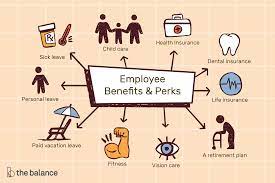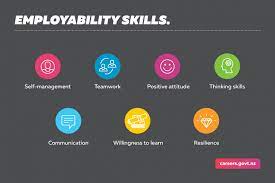Want help to write your Essay or Assignments? Click here
Corporate Culture for Remote Workers
Introduction
The global “workplace,” has resulted in a convergence of cultures that are diverse and integrate individuals from diverse backgrounds. However, even with diverse backgrounds, individuals should be able to integrate into teams so that there is a successful achievement of the organization’s objectives. According to Guiso, Sapienza and Zingales (2015), the leaders of corporate organizations have the responsibility of maintaining governance and a required corporate culture so as to achieve their objectives and profitability.
The employees are the representatives of an organization in their daily work and actions outside the organization. The image that the employees portray should be a reflection of the values and objectives of the organization.
Clients and other stakeholders should feel that the employees of the organization are committed to achieving the set goals and intended image that they would inspire them to work with the company. Before an organization establishes a corporate culture, it should ensure that its leaders are ethical and believe in the values of the organization. Leaders that believe in the objectives and mission of the company can easily pass those values to employees.
In addition to being motivated to remain ethical in their leadership practices, the senior managers and executives should possess integrity as one of their characters. When the leaders’ possess integrity, employees are likely to be motivated to follow their guidance and vision. Leaders with integrity are also likely to earn the required respect of the employees in the organization.
Importance of Corporate Culture
Organizations also have unique personalities that separate them from their competitors and other firms. Parameters such as procedures, policies, hierarchies, leadership styles, habits and shared values of the employees and stakeholders form the corporate culture of an organization.Usually, sales levels, financial performance, and planning, the corporate culture of a firm should be deliberately planned for, cultivated, and nurtured. The corporate culture acts as a factor in attracting clients and business partners for an organization.
The culture shows the “outside world” the values that are important for the organization, and therefore adhered to in attaining objectives and conducting business.The board of directors usually focus on controlling the spending of a firm so that shareholders get as much of their wealth maximized as possible. The board also focuses on the growth of the company in terms of revenue and market share.
A corporate culture cannot be monetized, but it contributes to the profitability or lack of it, to a company. Therefore, the corporate culture of an organization should be monitored regularly, and changed to fit the dynamics of the industry and technology. Corporate cultures have an impact on the employees that companies attract and retain, as well as the commodities, or services offered, and revenue earned.
Companies that take pride in, and promote their corporate cultures are attractive to their current and potential employees. The clients of such organizations also want to associate with the organizations because they want to find out more information on what makes the organizations tick and pursue their objectives and mission in delivering commodities or services to their clients.
Companies that have healthy corporate cultures are able to retain employees for a long duration. The employees also have a positive attitude in light of the company, which in turn goes to the creation of a desirable team spirit. If organizations have to hire new staff members, they would spend highly on recruiting and training which would cut back on the firms’ funds, time and manpower hours. Organizations should therefore target the cultivation of a healthy corporate culture so that they retain their current employees.
Healthy corporate cultures allow organizations to charge high values for the commodities they produce or services offered to clients. The corporate culture possessed by an organization acts as a reputation that precedes the organization in the market. A company that has a healthy corporate culture is aware of the high quality production of its commodities or services that they have to deliver. The corporate culture guides the employees to be aware of the qualities and standards that they should uphold in delivering what is expected to their customers. Therefore, they have to meet the set baseline so that clients can be satisfied, and guiding principles upheld.
A corporate culture also results in the maintenance of high productivity among the workforce. The employees have a high morale which directly impacts their productivity in a positive tone. The productivity in turn results in a positive impact on the financial health of the organization. Therefore, there is a positive circle of production and healthy corporate culture maintenance.
The foundation of success that is established through a positive and healthy corporate culture results in placing of the company highly in comparison to its competitors. The corporate culture can result in positive growth for all the organization’s departments, and hinder complacency. Individuals’ characters and personalities cannot be changed wholly, but their attitude and behaviour can be guided through the establishment and maintenance of a positive corporate culture. This research paper will cover how remotely working employees can be included in the corporate culture of an organization.
Want help to write your Essay or Assignments? Click here
BACKGROUND OF THE PROBLEM
Remote working is expected to grow in the coming years based on the increase in the level of cost cutting being conducted by organizations. A large number of companies are increasing outsourcing, or employing a higher number of employees remotely. The employees can either be on temporary or a permanent basis of employment. Remote employees are usually on the usual payroll just like normal employees that report to the office on a daily basis. Most individuals confuse remote employees with freelancers, virtual or outsourced personnel.
The only difference between employees that report physically to the office and remote employees is that the latter work from home. Complacency can fall into the schedule of remote employees if they feel like they are not getting the required feedback. The employees do not get daily feedback as opposed to employees that would be working on a cubicle in the office, and constantly in touch with their bosses or colleagues (Gareri, 2013: 1). The management should spell out the corporate culture that they expect from their employees, and constantly monitor and evaluate the level of cooperation, if any, given by the remote employees.
Through the quality, consistent and constant nature of the feedback given by the employees, the management would know whether the corporate culture was effective, or if it would have to be adjusted to fit the remote employees. Parameters such as communication, promptness in submission of work and adhering to deadlines would be determined by the corporate culture. The social media profiles of employees that work at the organization might fall into the spectrum of the organization’s corporate culture. Some business partners are sensitive about the image that is portrayed by organizations and their employees on social media.
Such organizations feel that the employees and executives of an organization are a reflection of the image and values of the organization. Therefore, the image that is portrayed on platforms such as social media would contribute to their value and image as well; through association and conducting business together. The remote employees should get clear communication on whether the corporate culture falls into the extremes of observing certain guidelines and rules in their work, or which side they lean towards.
The current generation of millennial individuals has grown up using technology for entertainment purposes, and doing their assignments. Previous generations had to go to the library and physically interact with their colleagues through discussion groups. Currently, millennial learners can attend online classes and graduate, without having met any of their colleagues. Therefore, there is a high proportion of the current generation of individuals that would prefer working remotely; away from the office.
According to Besner (2014: 1), remote employees should be guided on the level of feedback and acknowledgement between them, and their supervisors and colleagues. Consistent communication is required so as to ensure that there is progress and the work done complies with the required guidelines and standards. The remote employees should also be included and guided on the manner in which the processes of the organization should take place.
All departments in organizations have processes that should be adhered to, so that required tasks are accomplished within stipulated durations. Employees that report to physical offices usually have a timeline within which they report and finish all their assigned tasks. This timelines should also be established and communicated to the remote employees so that misunderstandings do not arise.
The turnaround on projects and workload should have stipulated submission deadlines. Even though the remoteemployees are away from the office, they should still maintain deadlines so that no individuals or departments are inconvenienced. Remote working employees might feel neglected if they are not included in the corporate culture.
Most corporate organizations have serious corporate cultures that guide the behaviour of employees and stakeholders. The different departments in the organization should come up with guidelines that would clarify the manner in which their employees should act. There should be specifications about the manner in which remote working employees are expected to act in accordance to their tasks and organization mission and vision achievement.
The departments would also be expected to specify the durations during which the employees would be expected to report in the office for different events such as critical meetings, team building, and office parties. Therefore, the employees would still get some physical contact with some of their colleagues, and seek redress of any issues that they would be facing in relation to their remote working.
The remote employees should also be informed of any team building exercises and the timelines within which they would be required to attend. The team building exercises are usually meant to strengthen colleagues’ working relationships and therefore form strong teams. The remote employees should especially not miss attending the team building meetings because they would contribute to interacting with employees in the different departments.
The remote employees and those that work in the office might only have had interactions through online communications such as video chats and emails. The physical meeting can strengthen their team work and therefore contribute to higher productivity.
The remote employees should also physically attend some of the meetings that are held by departments or the organization as a whole. The meetings usually serve as a platform where the management communicates the continued objectives, mission, and values that make the organization unique and give it a competitive position.
Employees require awareness of these values, so that all their personal achievements as related to their work, reflects those values. The department heads could also interact with the remote working employees during such meetings and encourage them to align their personal goals to those of the organization.
Research question
How can remote working employees be included in the corporate culture?
Objectives
To find out if employees would be willing to work from anywhere in the world
To find out how an organization can promote a sense of solidarity for a remote workforce.
To find out how can productivity be increased in the organization?
Primary research method
The research utilized interviews for research into the effect of a physical environment on corporate culture. The organization that was focused on is Elastic Recruitment Agency. The company recruits individuals from broad professionals for their clients. The company also hires a high number of professionals that work remotely. The number might increase with the trend in the workforce for organizations to cut back on costs for offices and health insurance based on the type of employment offered to employees (permanent or part time).
A contact employee in the human resources department, assisted in the distribution of the questions to the company’s employees who work remotely. The online questionnaires will be forwarded to the employees who work remotely, and requests made to fill in and return them within the week so that the results are compiled, analyzed and included in the research report by the second week.
The contact person was critical in introducing the questionnaires to the organization’s remote working employees. The employees of an organization are likely to be more cooperative in participating in a research study if it is “okayed” by a colleague. The contact person felt that the survey results would be useful in the field and would also contribute to guiding of business partners and clients in the near future.
References
Besner, G. 2015, Why Company Culture is more Important than Ever. Entrepreneur.
https://www.entrepreneur.com/article/247522
Gareri T, 2013, Roma Moulding: Why Company Culture is so Important. http://www.romamoulding.com/why-company-culture-is-so-important/
Guiso, L., Sapienza, P. &Zingales, L. 2015.The Value of Corporate Culture. NBER Conference on the Causes and Consequences of Corporate Culture, Journal of Financial Economics July 2015 117(1):60-76.
Want help to write your Essay or Assignments? Click here









